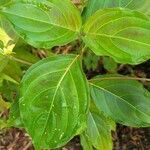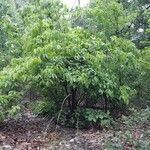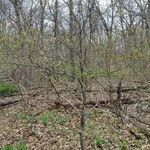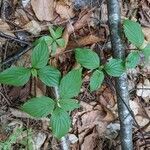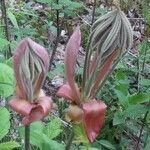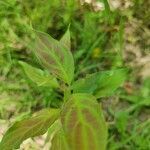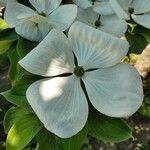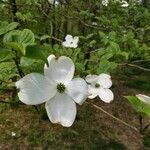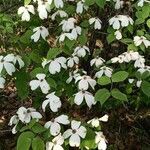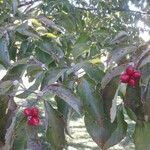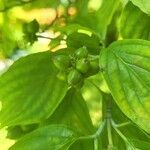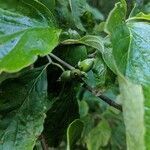A deciduous tree. It grows 4-12 m tall. The bark is red-brown to blackish. It cracks into small square plates. The leaves are oval and 10 cm long by 6 cm wide. They taper to a point and do not have teeth. They are dark green and smooth above and whitish and softly hairy underneath. The leaves turn bright red in the autumn. The flowers are small and greenish in dense half round clusters. There are 4 white to pink bracts around each cluster. These bracts have a notch at the tip. The fruit are small and red and in clusters. These separate when ripe.
Widely branched small tree (or large shrub) to 10 m, the bark becoming closely and deeply checked; lvs ovate to elliptic or obovate, mostly 6–10 cm and half as wide, abruptly acuminate, pale beneath, strigillose on both sides; bracts 4, white (pink), obcordate, notched at the tip, 3–6 cm; fls yellowish, 20–30 in the cluster; fr red, ellipsoid, 10–15 mm; 2n=22. Woods; Me. to s. Ont., Mich., Ill., Mo., and Okla., s. to Fla. and ne. Mex. May, June, before the lvs are fully grown. (Cynoxylon f.)
